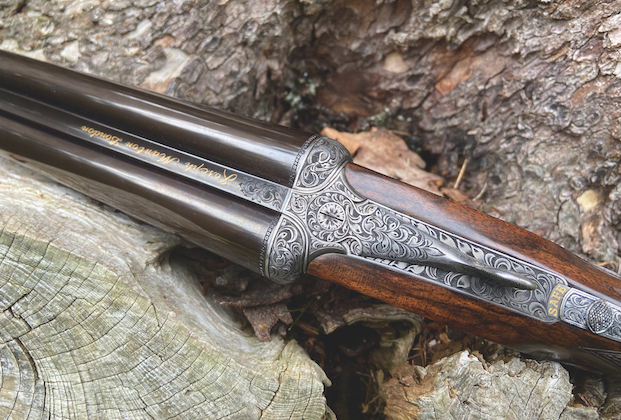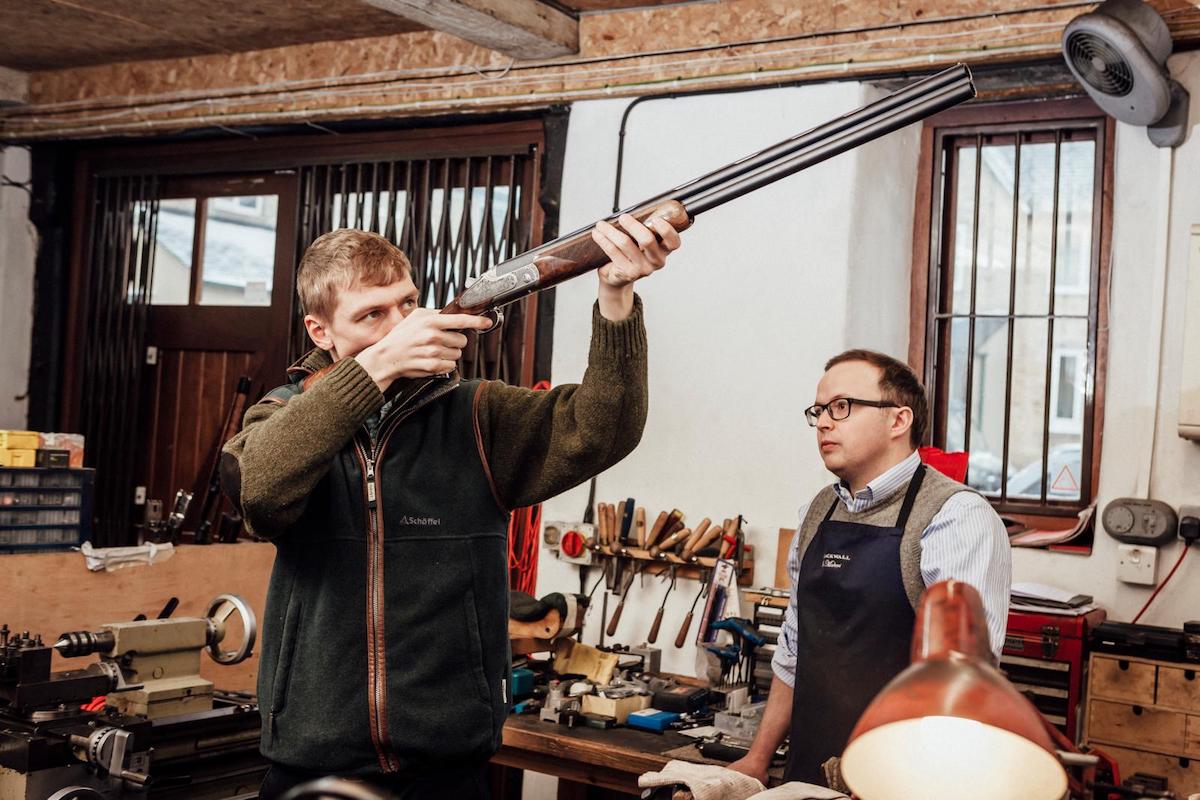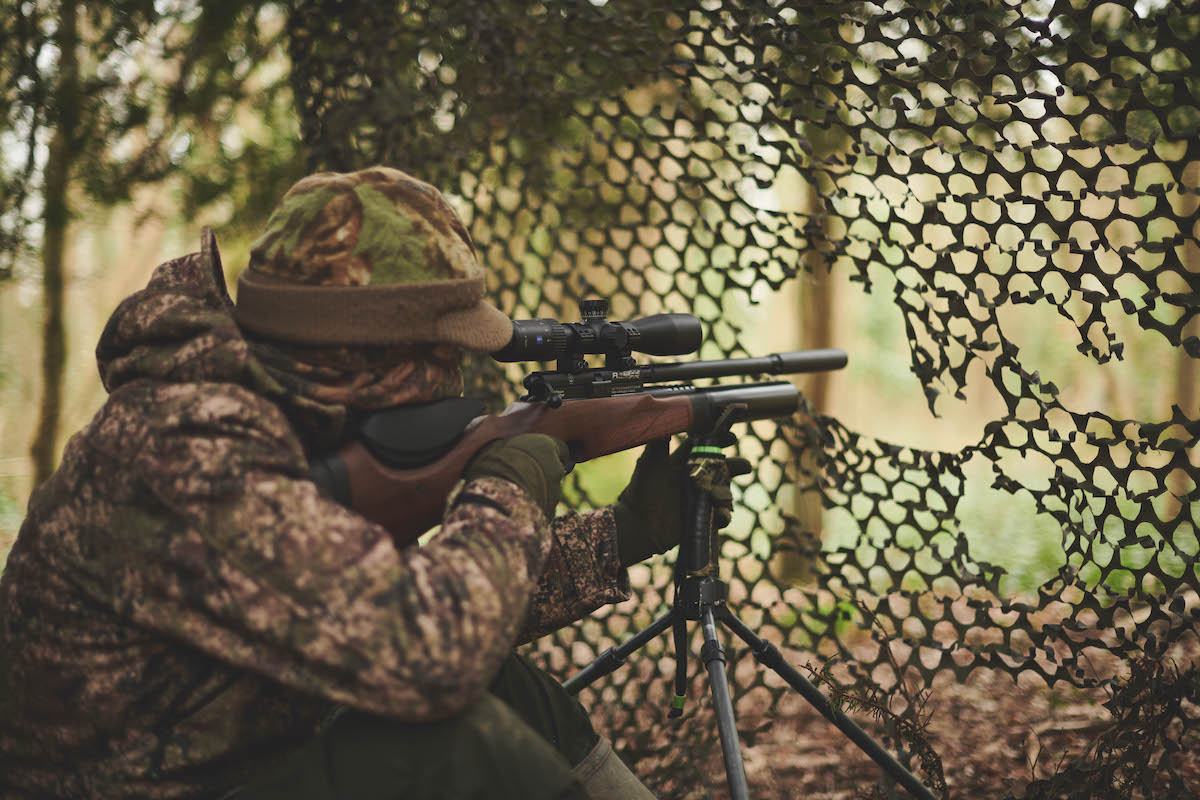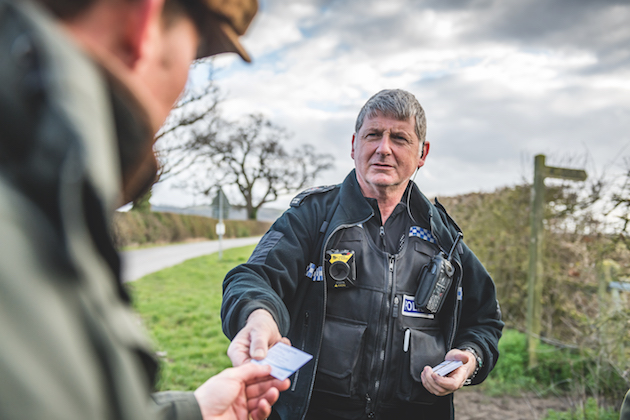Is a 20-bore better than a 12-bore for long, walked-up days?
The lightweight 20-bore is often said to be preferable to a 12-bore for those long walked-up days, but Diggory Hadoke has his doubts

The 20-bore side-by-side is slim, light and quick to pick up and move
The proposition was put to me recently that the ideal gun for walked-up shooting is a lightweight 20-bore side-by-side shotgun. It got me thinking, in these days where 20-bore mania is still gripping the nation, what is the enduring appeal of the Victorian ladies’ gun to the strapping six-footers who predominate in today’s shooting field?
The lightweight 20-bore
Setting aside the merits of the over-and-under for now, perhaps we should start our deliberations with the origins and purpose of the 20-bore side-by-side when it emerged as an option for shooters during the middle of the 19th century.
Tom and Jim Purdey, writing in 1936, summed up the benefits thus: “The 20-bore gun is quite a popular one. It is used by many ladies and has proved itself ideal for quail shooting in America and any kind of walking-up shooting in the tropics, the reason being that it is light in weight and the cartridges also weigh less than a bag full of 12-bore shells. This makes a considerable difference when the shooter has to carry a gun and cartridges throughout the day.”
Purdey suggests the ideal weight for a 20-bore is from 5lb 4oz to 5lb 12oz, when made with 2½in chambers. With 2¾in chambers, he suggests a heavier gun of up to 6lb 4oz.
Cartridges designed for use in these guns show how times have changed. Eley sold a delightfully pink ‘20 Gauge’ paper-cased 2½in cartridge in the 1930s, loaded with Smokeless Diamond powder and ¾oz of shot. The British side-by-side 20-bore was not intended to throw a 32g (1 ⅛oz) load, like modern 20- bore over-and-unders often do.
The standard load for a 20-bore was originally 2¼ drams of blackpowder and ¾oz of shot. With the advent of ‘smokeless’ powders, the black was replaced with 24 grains of EC powder and ¾oz of shot. A more powerful 2¾in smokeless load would be 26 grains of EC and ⅞oz of shot.
It is not uncommon to hear the claim that a lightweight 20-bore is the equal of a 12-bore for ‘normal’ game shooting and certainly for walked-up shooting. Common as it is, the claim cannot be allowed to stand without a certain amount of scrutiny. The effectiveness of a shotgun, when all is said and done, is the result of discharging it when that discharge reaches the quarry in flight, or on the run.
Should I use a 20-bore just because I’m female?
My husband has got me hooked on clay shooting and now wants to buy me a 20-bore because it’s lighter…
20-bore shotgun cartridges
Charles of Just Cartridges takes a look at the limited choice facing clay shooters using 20-bore guns. Will it ever…
Browning 20-bore shotgun at the IWA Shooting Show
See the Browning 20-bore shotgun at the IWA Shooting Show in Nuremburg, Germany.
Ballistic comparison
To claim a 20-bore is ‘as effective’ as a 12-bore, some data needs to be examined. If we consider 11/16oz of No 5 shot as a modern game load for the 12-bore, that means 234 pellets. For a 20-bore, with its standard charge of ¾oz, if using No 5 shot, you get just 165 pellets. Clearly, the same size pattern hitting a bird at 30 yards with only 165 pellets in it is not as deadly as one containing 234 pellets.
To put an equivalent number of pellets in the 20-bore pattern, you need to change down to No 7 shot. However, the energy delivered by No 7 shot is just 1.01ft/lb as opposed to the No 5 with striking energy of 1.85ft/lb. Again, the 12-bore is a winner.
Say you decide to modify performance by adjusting choke and compromising with No 6 shot. If you do so, you will get the same pattern at 30 yards from a 12-bore with improved cylinder as you will from a 20-bore with full choke. So you think you now have equivalence? You don’t. A full-choke 20-bore will be very tight at closer ranges and make closer shots harder, so you will miss more and, if you do connect, you are more likely to smash the bird.
So we need to roll back the idea of tightly choking the 20-bore for walked-up shooting and remember that the weakness of lighter shot is only relevant at the extremities of its range. If we accept that for walking-up we are likely to be taking shots at between 20 and 30 yards, then the lack of momentum at range of the No 7 pellet becomes less of an issue and the looser pattern of the No 6 shot at closer ranges is also less evident and consequential. At these ranges, the 20-bore’s limitations are much reduced in practical terms.

For long walks over dogs where quarry flushes quite close, a 20-bore can be a good option
Practical benefits
So much for the ballistic comparisons of payload delivery. We can now return to the practical benefits to the shooter of carrying a 20-bore rather than a 12-bore. Physically, a 20-bore is lighter, the barrel tubes are narrower, the action smaller and the overall effect of the gun is to make it faster to pick up and move around.
It is also less tiring to carry over rough ground for hours. This is not inconsequential. A 12-bore may deliver a more effective payload but if the sportsman is too fatigued from carrying it to mount and shoot when quarry flushes, that payload is unlikely to reach the target. In this scenario, the light 20-bore makes a case for itself. Also, remember that your bag of cartridges — or pockets if you prefer — will be less weighed down by the lead in 50 20-bore cartridges (37½oz) than by 50 12-bore loads (58oz).
Effective killer
Is a pattern beginning to emerge? For long walks over dogs, for quarry flushing quite close, a 20-bore side-by-side weighing well under 6lb and throwing ¾oz of No 6 through half-choke muzzles will be a pleasant companion to carry and an effective killer of game at moderate ranges. It will be fast to get on to the quarry and should have patterns open enough to kill at closer and medium ranges, yet tight enough to be effective at slightly extended ones.
It will not be as effective as a 12-bore or a full-choke 20-bore at ranges over 30 yards. Gun and cartridge selection is always a series of compromises and choices made according to the circumstances of the shooting to be contemplated.
Adjustments will need to be made if quarry varies in size. Shooting quail or snipe will demand fuller patterns and therefore smaller shot, which limits effective range further. Large quarry, such as hares or pheasants, will demand larger pellets and tighter choke to be effective at the same ranges discussed.

Limitations
In conclusion, it would appear that if your walked-up shooting is presenting most of your shots at 20 or 25 yards and your quarry is woodcock, rabbit, partridge and pigeon with the occasional pheasant, you are not much handicapped by a lightweight 20-bore with a standard load. Once you start shooting smaller, bigger or longer-range targets, its limitations become more apparent.
However, all you shooters of continental over-and-unders weighing well over 7lb may find a traditional British 12-bore, weighing the same as a Silver Pigeon 20-bore and throwing an ounce with perfect patterns through improved cylinder muzzles, serves up all the weight savings and reactivity that you could desire in a walked-up situation.
There is a reason the 6½lb 12-bore side-by-side was, by a considerable margin, the most popular and widely made gun of the Victorian and Edwardian eras. A lightweight 20-bore may look sexy but I say leave them for the ladies, the teenagers and the veterans and look for a lightish 12-bore; it does everything better.











